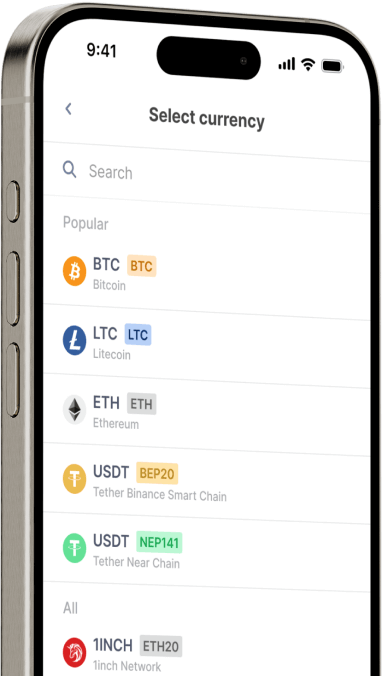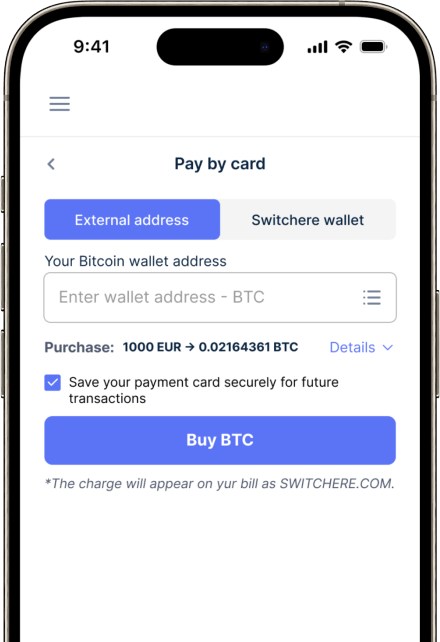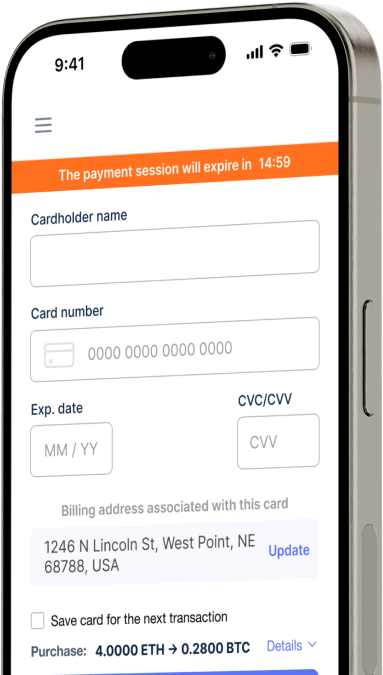Convert
Euro (EUR) to CTC (CTC) Instantly
Purchase CTC (CTC) with Euro (EUR) easily at Switchere and benefit from fast, secure transactions.
About
CTC (CTC)
Creditcoin (CTC) is a foundational blockchain technology designed to address a critical gap in the global financial system: the lack of a universal, transparent credit history. Its primary objective is to create a decentralized network for a borderless credit market, specifically targeting the unbanked and underbanked populations. By recording loan performance on a public digital ledger, Creditcoin provides a mechanism for individuals and businesses to build a verifiable, on-chain credit history. This digital asset aims to bridge the divide between traditional finance and DeFi applications, fostering greater financial inclusion by making credit more accessible and transparent across the globe through its innovative Web3 infrastructure.
The core of the Creditcoin protocol involves linking real-world, off-chain loan agreements to its immutable blockchain. This process creates objective proof of creditworthiness that is not controlled by any single entity. The native utility token, CTC, is integral to the ecosystem's operation. It is used to pay for transaction fees required to record credit transactions, such as loan requests and repayments, on the chain. Furthermore, CTC can be utilized for staking to enhance the cryptographic security of the network. This unique approach to integrating real-world assets (RWA) in the form of private credit establishes a foundational layer for on-chain reputation and new financial products.
Buy Other 150+ Cryptocurrencies for Euro (EUR)
Other Coins for Euro (EUR)
-
EUR to ZRX
-
EUR to 1INCH
-
EUR to AAVE
-
EUR to ACH
-
EUR to ALGO
-
EUR to TLM
-
EUR to ANKR
-
EUR to APE
-
EUR to NFT
-
EUR to API3
-
EUR to APT
-
EUR to ARPA
-
EUR to AUDIO
-
EUR to AVAX
-
EUR to AVAX
-
EUR to AXS
-
EUR to BADGER
-
EUR to BAL
-
EUR to BNT
-
EUR to BAT
-
EUR to BNB
-
EUR to BSW
-
EUR to BSV
-
EUR to BLUR
-
EUR to BONE
-
EUR to CTSI
-
EUR to CELR
-
EUR to CELO
-
EUR to CEL
-
EUR to LINK
-
EUR to CHZ
-
EUR to CHR
-
EUR to C98
-
EUR to COMP
-
EUR to CFX
-
EUR to PEOPLE
-
EUR to CVX
-
EUR to ATOM
-
EUR to CTC
-
EUR to CRV
-
EUR to DAI
-
EUR to DASH
-
EUR to MANA
-
EUR to DENT
-
EUR to DGB
-
EUR to DYDX
-
EUR to XEC
-
EUR to EOS
-
EUR to ETC
-
EUR to ENS
-
EUR to ETHW
-
EUR to FET
-
EUR to FIL
-
EUR to FLOKI
-
EUR to GALA
-
EUR to GNO
-
EUR to ONE
-
EUR to HBAR
-
EUR to HOT
-
EUR to HOOK
-
EUR to ICX
-
EUR to ILV
-
EUR to IMX
-
EUR to INJ
-
EUR to ICP
-
EUR to IOST
-
EUR to IOTX
-
EUR to JASMY
-
EUR to JST
-
EUR to KAVA
-
EUR to KCS
-
EUR to KSM
-
EUR to KNC
-
EUR to LDO
-
EUR to LQTY
-
EUR to LPT
-
EUR to LOOKS
-
EUR to LRC
-
EUR to LUNA
-
EUR to MKR
-
EUR to MASK
-
EUR to EGLD
-
EUR to ALICE
-
EUR to NEAR
-
EUR to XEM
-
EUR to NEXO
-
EUR to NOT
-
EUR to NMR
-
EUR to OKB
-
EUR to OMG
-
EUR to ONT
-
EUR to EDU
-
EUR to OP
-
EUR to OGN
-
EUR to CAKE
-
EUR to PAXG
-
EUR to PENDLE
-
EUR to DOT
-
EUR to POL
-
EUR to QTUM
-
EUR to QNT
-
EUR to RDNT
-
EUR to XRD
-
EUR to RVN
-
EUR to REN
-
EUR to RSR
-
EUR to RLC
-
EUR to RPL
-
EUR to SFP
-
EUR to SHIB
-
EUR to SKL
-
EUR to SXP
-
EUR to STND
-
EUR to STG
-
EUR to XLM
-
EUR to GMT
-
EUR to STORJ
-
EUR to STMX
-
EUR to SUSHI
-
EUR to SNX
-
EUR to USDT (Polygon)
-
EUR to USDT (AVAC)
-
EUR to USDT (BEP20)
-
EUR to USDT (ERC20)
-
EUR to USDT (SPL)
-
EUR to USDT (NEP141)
-
EUR to USDT (FA2)
-
EUR to USDT (TRC20)
-
EUR to USDT (JETTON)
-
EUR to XTZ
-
EUR to GRT
-
EUR to SAND
-
EUR to TFUEL
-
EUR to THETA
-
EUR to RUNE
-
EUR to TON
-
EUR to TUSD (BEP20)
-
EUR to TUSD (TRC20)
-
EUR to TWT
-
EUR to UOS
-
EUR to UMA
-
EUR to UNI
-
EUR to USDC (Polygon)
-
EUR to USDC (SPL)
-
EUR to USDC (OP)
-
EUR to USDC (BEP20)
-
EUR to USDC (AVAC)
-
EUR to USDC (ARB)
-
EUR to USDC (ERC20)
-
EUR to VET
-
EUR to VRA
-
EUR to WAXP
-
EUR to WOO
-
EUR to WLD
-
EUR to WBTC
-
EUR to WMINIMA
-
EUR to XDC
-
EUR to YFI
-
EUR to YGG
-
EUR to ZIL
How to Buy CTC (CTC)
Frequently Asked Questions
-
What are the primary methods for purchasing Creditcoin (CTC) with Euros (EUR)?
The most common method to buy Creditcoin (CTC) with Euros is through a centralized cryptocurrency exchange that lists the EUR/CTC trading pair. This process typically involves creating an account, completing KYC/AML compliance, and then using a SEPA transfer, which is often a low-cost fiat on-ramp for Eurozone residents. Alternatively, you can use a credit/debit card, although this may incur higher fees.
-
What types of fees are associated with EUR to CTC transactions?
When converting EUR to CTC, you can expect several potential fees. First, there may be a deposit fee for your Euros, which varies by method (SEPA transfers are often free, while cards are not). Second, the cryptocurrency exchange will charge a trading fee (either a 'maker' or 'taker' fee) for executing the order. Finally, if you move your CTC to a private digital wallet, there will be a network withdrawal fee, which is determined by the exchange and covers the on-chain blockchain transaction cost.
-
Is KYC/AML compliance mandatory for EUR to CTC fiat on-ramp services?
Yes, for virtually all regulated cryptocurrency exchanges that offer a direct EUR fiat gateway, completing Know Your Customer (KYC) and Anti-Money Laundering (AML) verification is mandatory. This process typically involves submitting a government-issued ID and sometimes a proof of address to comply with financial regulations within the Eurozone and prevent illicit activities.
-
What utility does the Creditcoin (CTC) network provide to those acquiring it with EUR?
Creditcoin is a Layer-1 blockchain designed to create an objective credit history ledger. By purchasing CTC with EUR, users gain access to an ecosystem focused on financial inclusion. The protocol's primary utility is recording loan performance and other credit-related transactions from the real world onto its immutable blockchain, aiming to bridge real-world assets (RWA) and credit markets with DeFi for the underbanked.
-
How can I securely store my Creditcoin (CTC) after a EUR purchase?
For optimal security, it is highly recommended to move your Creditcoin (CTC) from the cryptocurrency exchange to a self-custody digital wallet after your purchase. For long-term holding, a hardware wallet (cold storage) offers the highest level of security as it keeps your private keys offline. For more frequent use, a dedicated software wallet for the Creditcoin network can be used, but always ensure you securely back up your seed phrase.
-
What is the significance of the EUR/CTC trading pair for European investors?
The EUR/CTC pair provides a direct fiat on-ramp for investors in the Eurozone, eliminating the need for currency conversions through USD or stablecoins. This direct access improves liquidity, can reduce transaction costs, and simplifies entry into the Creditcoin ecosystem, which is focused on tokenizing real-world assets (RWA) like credit loans. It allows European participants to directly engage with a blockchain aiming to build a global, verifiable credit history ledger.




